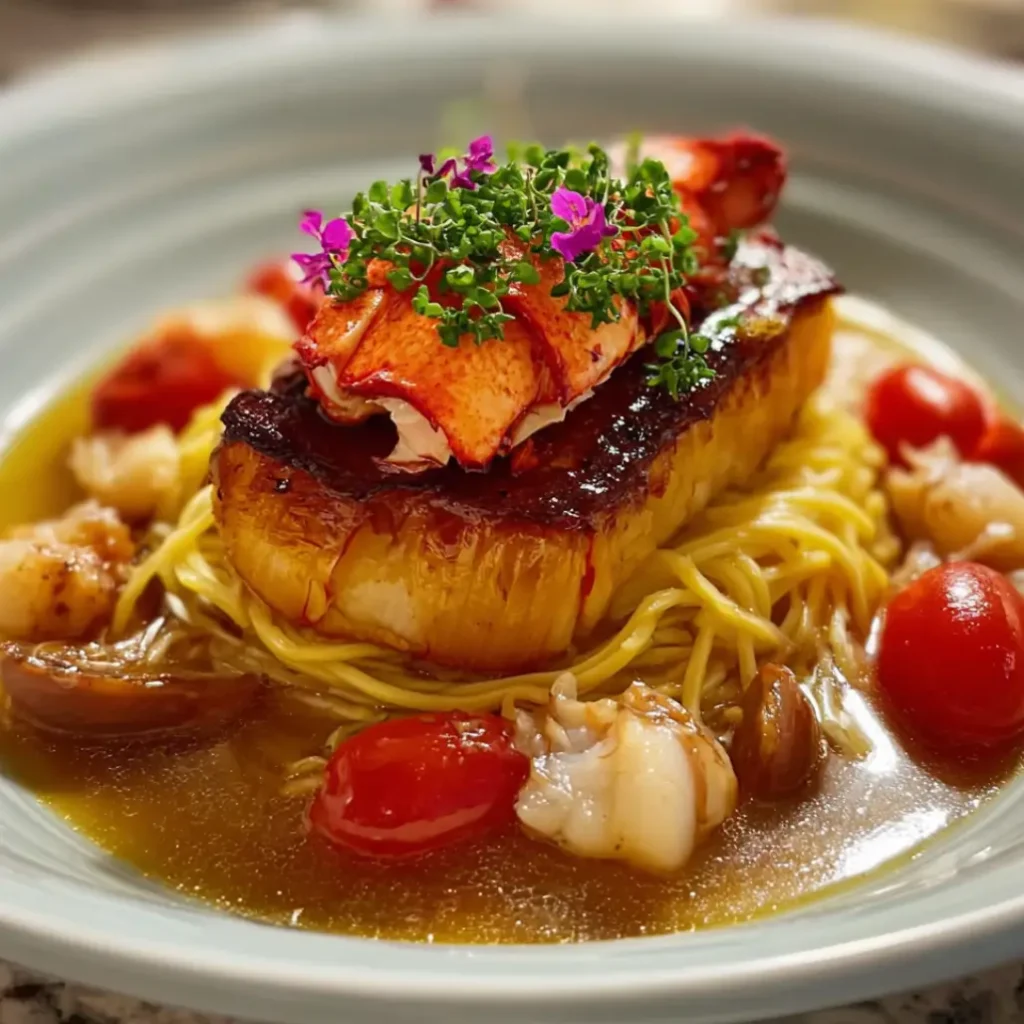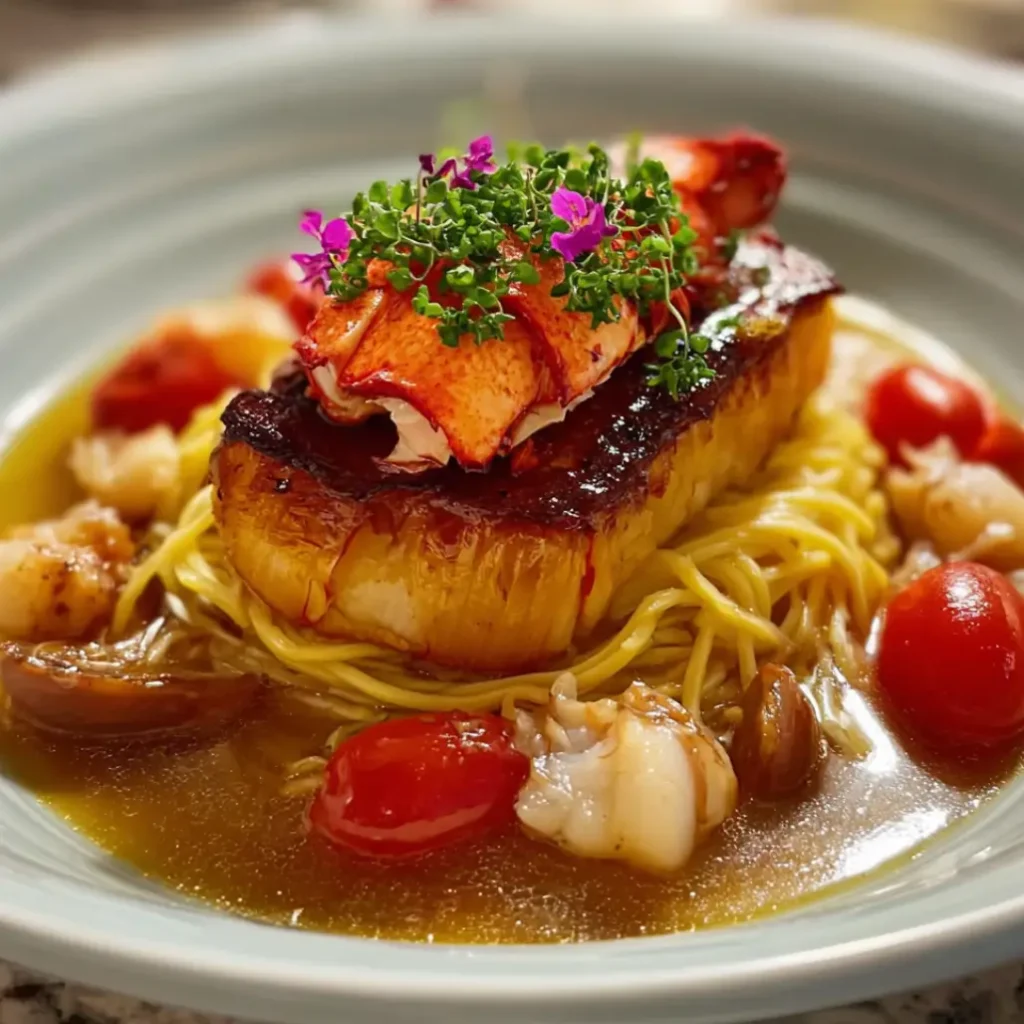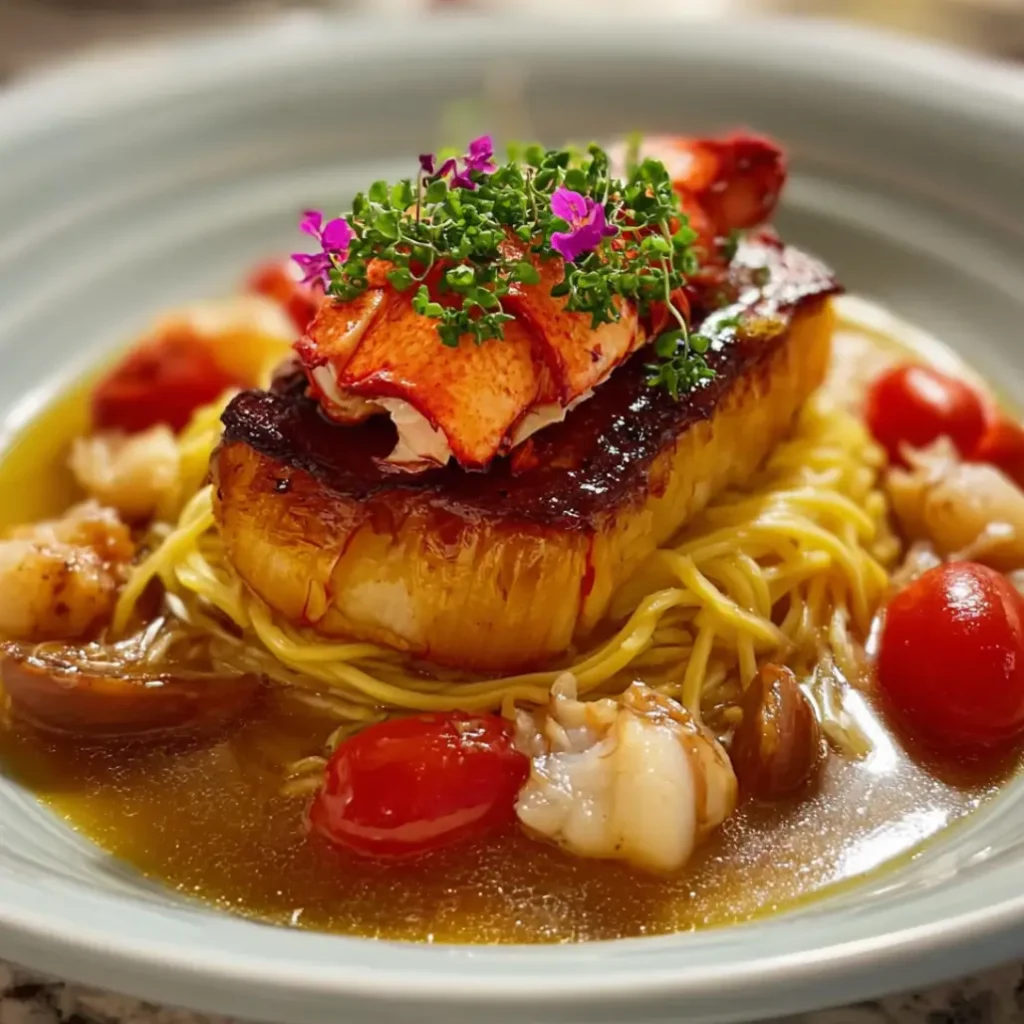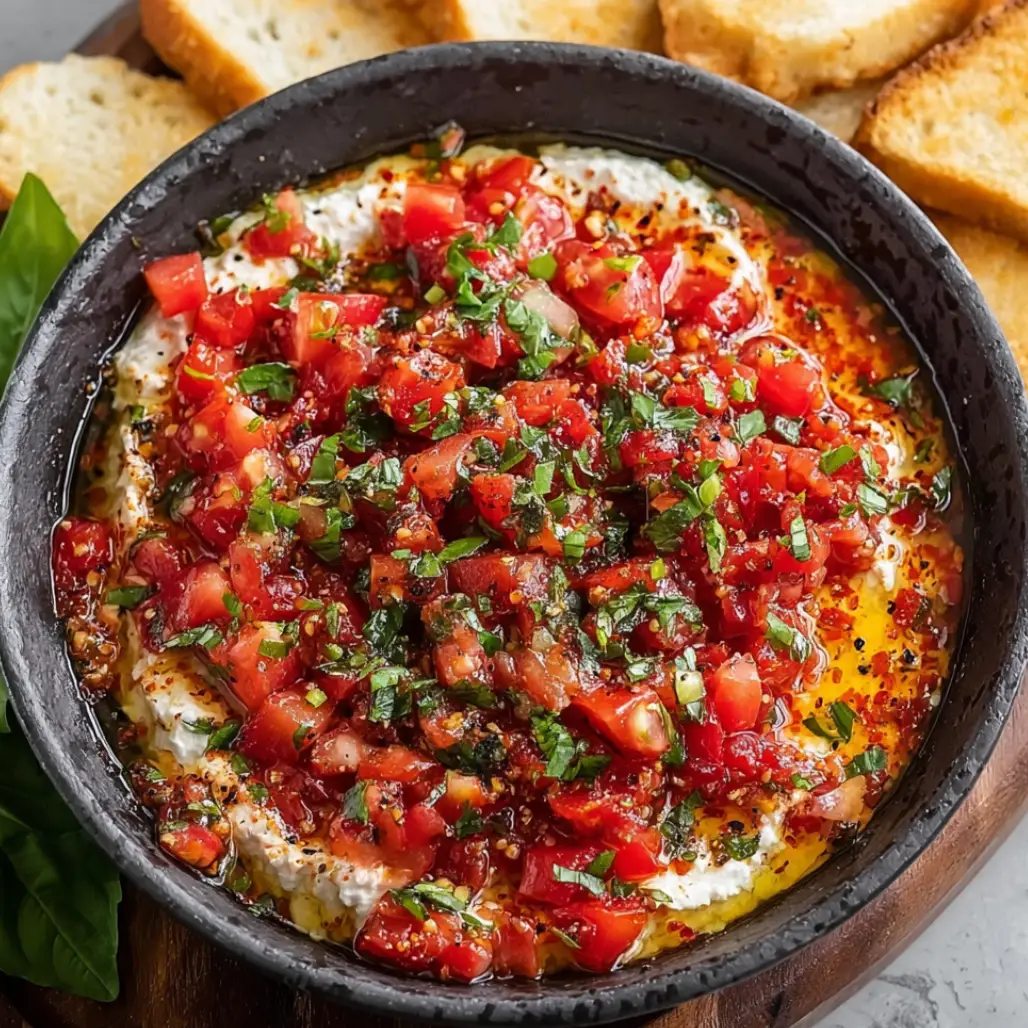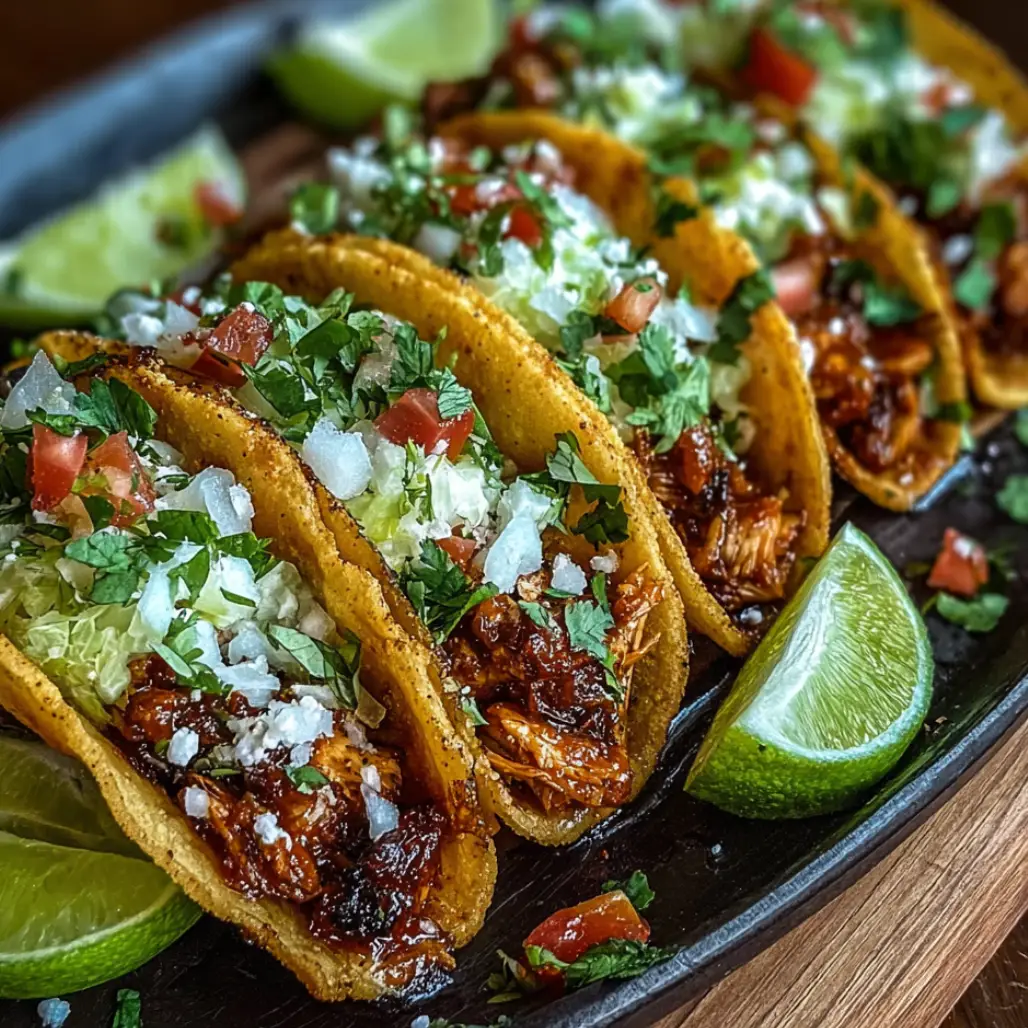| Prep Time: | 15 minutes |
|---|---|
| Cook Time: | 20 minutes |
| Total Time: | 35 minutes |
| Serves: | 4 |
Experience the ultimate luxury of buttered lobster pasta, because this extraordinary dish transforms ordinary weeknight dinners into restaurant-quality celebrations that showcase the magnificent sweetness of fresh lobster nestled in rich, golden butter sauce. This incredible buttered lobster pasta recipe delivers restaurant elegance to your home kitchen because it combines succulent lobster meat with aromatic garlic, fresh herbs, and perfectly al dente pasta that creates an unforgettable dining experience worthy of special occasions and romantic evenings.
Why Buttered Lobster Pasta Becomes Everyone’s Favorite
This buttered lobster pasta recipe succeeds brilliantly because it highlights the natural sweetness of lobster without overwhelming its delicate flavor profile with heavy sauces or excessive seasonings. The golden butter base provides the perfect foundation because it enhances the lobster’s inherent richness while allowing the seafood to remain the star of this sophisticated dish. The simplicity of preparation makes this buttered lobster pasta accessible to home cooks because the technique focuses on proper timing and temperature control rather than complicated culinary skills.
The magic happens when fresh lobster meets perfectly browned butter because this combination creates complex nutty undertones that elevate the entire dish from good to extraordinary. Each bite delivers tender lobster pieces coated in aromatic butter sauce because the pasta acts as the perfect vehicle to carry these luxurious flavors throughout every forkful.
Essential Ingredients for Perfect Buttered Lobster Pasta
For the Lobster Preparation:
- 4 lobster tails (6-8 ounces each)
- 2 tablespoons olive oil
- 1 teaspoon sea salt
- 1/2 teaspoon black pepper
- 2 cloves garlic, minced
For the Pasta and Sauce:
- 1 pound linguine or spaghetti
- 8 tablespoons unsalted butter
- 4 cloves garlic, finely minced
- 1/2 cup dry white wine
- 1/4 cup fresh lemon juice
- 1 tablespoon lemon zest
- 1/2 cup freshly grated Parmesan cheese
- 1/4 cup fresh parsley, chopped
- 2 tablespoons fresh chives, minced
- 1 teaspoon red pepper flakes
- Salt and white pepper to taste
For Finishing and Garnish:
- 2 tablespoons extra virgin olive oil
- Fresh basil leaves
- Additional Parmesan cheese for serving
- Lemon wedges for serving
The Art of Creating Buttered Lobster Pasta
Creating exceptional buttered lobster pasta begins with understanding the delicate balance between simplicity and technique because successful execution requires attention to timing, temperature, and the natural characteristics of each ingredient. The lobster should be cooked just until opaque because overcooking creates tough, rubbery texture that diminishes the entire dining experience.
The butter sauce serves as the heart of this dish because it must achieve the perfect consistency that coats pasta without becoming greasy or breaking. Proper emulsification occurs when pasta water combines with butter and cheese because the starch content creates a silky sauce that clings beautifully to each strand of pasta.
Step-by-Step Instructions for Buttered Lobster Pasta
Step 1: Prepare the Lobster Tails
Remove lobster meat from shells using kitchen shears, cutting along the top and sides to extract whole tail pieces because keeping meat intact creates better presentation and texture. Cut lobster into bite-sized chunks, approximately 1-inch pieces, because uniform sizing ensures even cooking throughout.
Professional Tip: Pat lobster meat completely dry with paper towels because excess moisture prevents proper browning and can make the final sauce watery.
Key Points: Season lobster pieces lightly with salt and pepper, allowing the seasoning to penetrate for 10 minutes before cooking for maximum flavor development.
Step 2: Cook the Pasta to Perfection
Bring a large pot of heavily salted water to rolling boil, using approximately 2 tablespoons of salt per gallon because properly seasoned pasta water enhances the final dish flavor. Cook pasta until just shy of al dente, typically 1-2 minutes less than package directions because it will finish cooking in the sauce.
Professional Tip: Reserve 2 cups of starchy pasta water before draining because this liquid gold helps create the perfect sauce consistency and binds all flavors together.
Key Points: Use tongs to transfer pasta directly from pot to skillet when combining with sauce because this technique maintains optimal temperature and texture.
Step 3: Create the Golden Butter Base
Heat 2 tablespoons of butter in a large skillet over medium heat, swirling until foam subsides and butter begins to turn golden brown because this nutty stage adds complex flavor depth. Add minced garlic and cook for 30 seconds until fragrant because extended cooking burns garlic and creates bitter notes.
Professional Tip: Watch butter carefully during browning process because the transition from golden to burnt happens quickly and cannot be reversed.
Key Points: Keep heat at medium level throughout cooking because high temperatures cause butter to break and separate rather than creating smooth emulsion.
Step 4: Sear the Lobster to Perfection
Add seasoned lobster pieces to the golden butter, cooking for 2-3 minutes until just opaque because lobster continues cooking from residual heat. Turn pieces gently using tongs because aggressive stirring breaks delicate meat into small fragments.
Professional Tip: Remove lobster from skillet as soon as it turns opaque because overcooking creates tough, chewy texture that ruins the luxurious eating experience.
Key Points: Set cooked lobster aside on a warm plate because it will be returned to the pan just before serving to maintain perfect temperature and texture.
Step 5: Build the Wine and Herb Sauce
Add remaining butter to the same skillet, allowing it to melt completely before adding white wine because this deglazing step captures all the flavorful bits from lobster cooking. Simmer wine for 2-3 minutes until alcohol evaporates and liquid reduces by half because concentrated flavors create more intense sauce.
Professional Tip: Use wine you would drink because cooking concentrates flavors, making low-quality wine taste even worse in the finished dish.
Key Points: Add lemon juice and zest at this stage because acidic elements brighten the rich butter and help balance the overall flavor profile.
Step 6: Combine and Finish the Dish
Add drained pasta to the skillet along with 1/2 cup reserved pasta water, tossing vigorously to create emulsion because the starch helps bind butter into silky sauce. Add Parmesan cheese gradually while tossing because slow incorporation prevents clumping and creates smooth consistency.
Professional Tip: Keep the skillet moving constantly during final assembly because constant motion helps create the glossy, restaurant-quality sauce texture.
Key Points: Return lobster to the pan during final 30 seconds of cooking because brief reheating warms the seafood without overcooking the delicate meat.
Professional Tips for Restaurant-Quality Results
Temperature control proves absolutely crucial because butter-based sauces require precise heat management to prevent breaking or separating. Use a heavy-bottomed skillet because even heat distribution prevents hot spots that can scorch delicate ingredients and ruin the final presentation.
Quality ingredients make the difference between good and extraordinary because fresh lobster, real butter, and authentic Parmesan cheese provide the foundation for exceptional flavor development. Choose lobster tails that feel heavy for their size because this indicates firm, fresh meat with optimal texture and taste.
Time management ensures success because all components should finish simultaneously to serve the dish at peak temperature and texture. Prepare all ingredients before beginning because buttered lobster pasta comes together quickly once cooking begins.
Creative Variations for Buttered Lobster Pasta
Transform this classic recipe with exciting variations because customization allows exploration of different flavor profiles while maintaining the essential character. Add cherry tomatoes during the wine reduction because their sweetness complements lobster while providing beautiful color contrast that enhances visual appeal.
Incorporate fresh spinach during final assembly because wilted greens add nutritional value and earthy flavor that balances the rich butter sauce. Consider substituting brown butter for regular butter because the nutty complexity creates a more sophisticated flavor profile that pairs beautifully with lobster’s natural sweetness.
For those preferring lighter options, reduce butter quantity and increase olive oil because this modification maintains richness while creating a somewhat healthier version that still delivers outstanding taste and satisfaction.
Perfect Pairing Ideas for Buttered Lobster Pasta
This elegant buttered lobster pasta pairs magnificently with crisp, refreshing salads from https://tastymiddles.com/category/salads/ because light greens dressed with lemon vinaigrette cleanse the palate between rich, buttery bites. Start your sophisticated meal with delicate appetizers from https://tastymiddles.com/category/snacks-appetizers/ because small plates build anticipation without overwhelming the main course.
Complement this luxurious dish with carefully selected sides from https://tastymiddles.com/category/perfect-sides/ because vegetables prepared simply allow the lobster to remain the focal point. Wine selection enhances the dining experience because crisp white wines like Chardonnay or Sauvignon Blanc complement both butter and seafood without competing for attention.
Fresh bread serves an important role because crusty loaves help capture every drop of the precious butter sauce, ensuring nothing goes to waste during this indulgent meal.
Discover More Luxurious Flavors
Expand your sophisticated cooking repertoire with complementary recipes that share similar elegance because building cohesive menus creates memorable dining experiences. Explore refined side dishes at https://solushrecipes.com/category/savory-sides/ because vegetables prepared with care enhance rather than distract from the main course presentation.
Enhance your meal preparation with elegant marinades from https://solushrecipes.com/category/flavored-dips-marinades/ because these versatile sauces can elevate simple ingredients into restaurant-quality accompaniments. Consider preparing sophisticated beverages from https://solushrecipes.com/category/refreshing-beverages/ because thoughtfully chosen drinks complete the luxurious dining experience.
For comprehensive meal planning, browse breakfast options at https://solushrecipes.com/category/breakfast-favorites/ because incorporating elegant elements into morning meals creates cohesive culinary themes throughout your cooking journey.
Storage Guidelines for Buttered Lobster Pasta
Proper storage techniques preserve both flavor and texture because leftover seafood pasta requires careful handling to maintain food safety and eating quality. Store cooled pasta in airtight containers for up to 2 days because longer storage compromises lobster texture and sauce consistency.
Reheat gently in a skillet with additional butter because microwave heating creates uneven temperatures and can make lobster tough. Add pasta water during reheating because the starch helps restore sauce consistency and prevents the dish from becoming dry or clumpy.
Avoid freezing buttered lobster pasta because seafood and dairy-based sauces do not freeze well and result in poor texture and separated sauce upon thawing.
The Science Behind Perfect Buttered Lobster Pasta
Understanding emulsification science improves results because butter sauces rely on proper fat and water molecule suspension for smooth, glossy consistency. Pasta water contains crucial starches because these natural thickeners help bind butter into stable emulsion that coats pasta evenly.
Heat management affects protein structure because lobster contains delicate proteins that become tough when overcooked beyond 140°F internal temperature. The Maillard reaction occurs during butter browning because this chemical process creates hundreds of flavor compounds that add complexity to simple ingredients.
Acid balance from lemon juice serves multiple purposes because it brightens rich flavors while helping maintain sauce stability through pH adjustment.
Troubleshooting Common Buttered Lobster Pasta Issues
Broken or greasy sauce typically results from excessive heat because high temperatures cause butter to separate rather than emulsify smoothly. Add cold butter gradually while whisking because this technique helps maintain proper emulsion throughout the cooking process.
Tough lobster indicates overcooking because seafood proteins tighten rapidly when exposed to excessive heat or prolonged cooking times. Monitor internal temperature carefully because lobster reaches optimal doneness at 140°F and continues cooking from residual heat.
Bland flavors often stem from under-seasoning because salt enhances all other flavors and should be adjusted throughout the cooking process rather than only at the end.
Additional Seafood Recipe Inspirations
Extend your culinary exploration with sophisticated dessert options from https://tastymiddles.com/category/dessert-recipes/ because elegant endings complement luxurious seafood meals beautifully. Consider light, fruit-based desserts because these choices provide refreshing contrast to rich, buttery main courses.
Build confidence with fundamental cooking techniques because mastering butter sauces and seafood preparation enables creative variations that impress family and friends. Seafood cookery emphasizes timing and temperature because these skills transfer to many other cooking applications and expand your culinary repertoire significantly.
Remember that practice develops intuition because each cooking session provides learning opportunities that enhance skills and deepen understanding of ingredient interactions and flavor development.
Conclusion
This exceptional buttered lobster pasta recipe represents the perfect marriage of luxury and simplicity because it showcases premium ingredients through careful technique rather than complicated preparations. The golden butter sauce provides the ideal backdrop because it enhances rather than masks the sweet, delicate flavor of fresh lobster that makes this dish truly special.
Whether preparing intimate dinners for two or entertaining discerning guests, this buttered lobster pasta guarantees impressive results because the combination of tender seafood, aromatic herbs, and silky sauce creates an unforgettable dining experience. The recipe’s elegance lies in its restraint because allowing each ingredient to shine produces far superior results than dishes that rely on excessive complexity or heavy-handed seasoning that overwhelms the natural beauty of fresh lobster.

